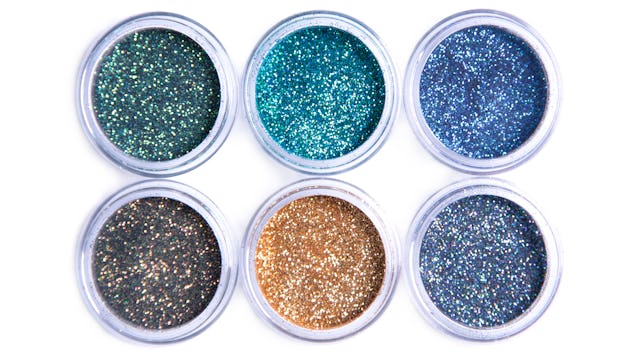Parents Everywhere Rejoice: Scientists Want To Ban Glitter

Glitter is a type of microplastic that can be detrimental to the environment (and the sanity of parents everywhere)
Ah, glitter. Kids love to craft with it, teenagers love to wear it in cosmetics, and parents absolutely detest it. Sure, it’s pretty and fun but it’s annoying AF to try and clean up or keep contained in any organized manner. It turns out it’s also pretty terrible for the environment, which is why scientists are looking to ban it.
Glitter is derived from microplastics — small pieces of plastic that, while tiny, actually present a significant danger to the environment. Specifically marine environments. “Approximately 90% of the plastics in pelagic marine environments are microplastics,” the EPA says. Microplastics and microbeads found in glitter, cleaning products, and synthetic fabrics are small enough to slip through wastewater treatment facilities into oceans and other marine environments, which also makes them small enough to be ingested by a “wide range of animals in the aquatic food web.”
In 2015, the United States enacted The Microbead-Free Waters Act of 2015. This prohibits the manufacturing, packaging, and distribution of rinse-off cosmetics containing plastic microbeads. But glitter isn’t held to the same standards as microbeads and other microplastics, even though glitter (both loose glitter used in crafts and the cosmetic kind) equally contribute to the pollution of marine life.
A recent study regarding the effect of microplastics on marine organisms show that this particular pollution problem results in certain marine organisms, like snails, growing at a slower rate. “Microplastics exposure could be detrimental to marine organisms especially under high concentrations,” says Abby Lo Hau Kwan, PhD student at the Division of Life Science, HKUST, and co-author of the study.
So what to do about glitter in particular? Banning it completely would certainly mean a lot less razzle-dazzle in our kids’ art projects, but luckily there are other options that will make both them and marine life happy: eco-glitter!
There are many companies that offer biodegradable, eco-friendly solutions to glitter comprised of harmful microplastics.
By using alternative solutions to microplastics like eco-glitter, we can all be part of making a huge difference to the environment. So, parents, go ahead and grab some — what you use today, you’ll find in the deepest crevices of the carpet for years to come.